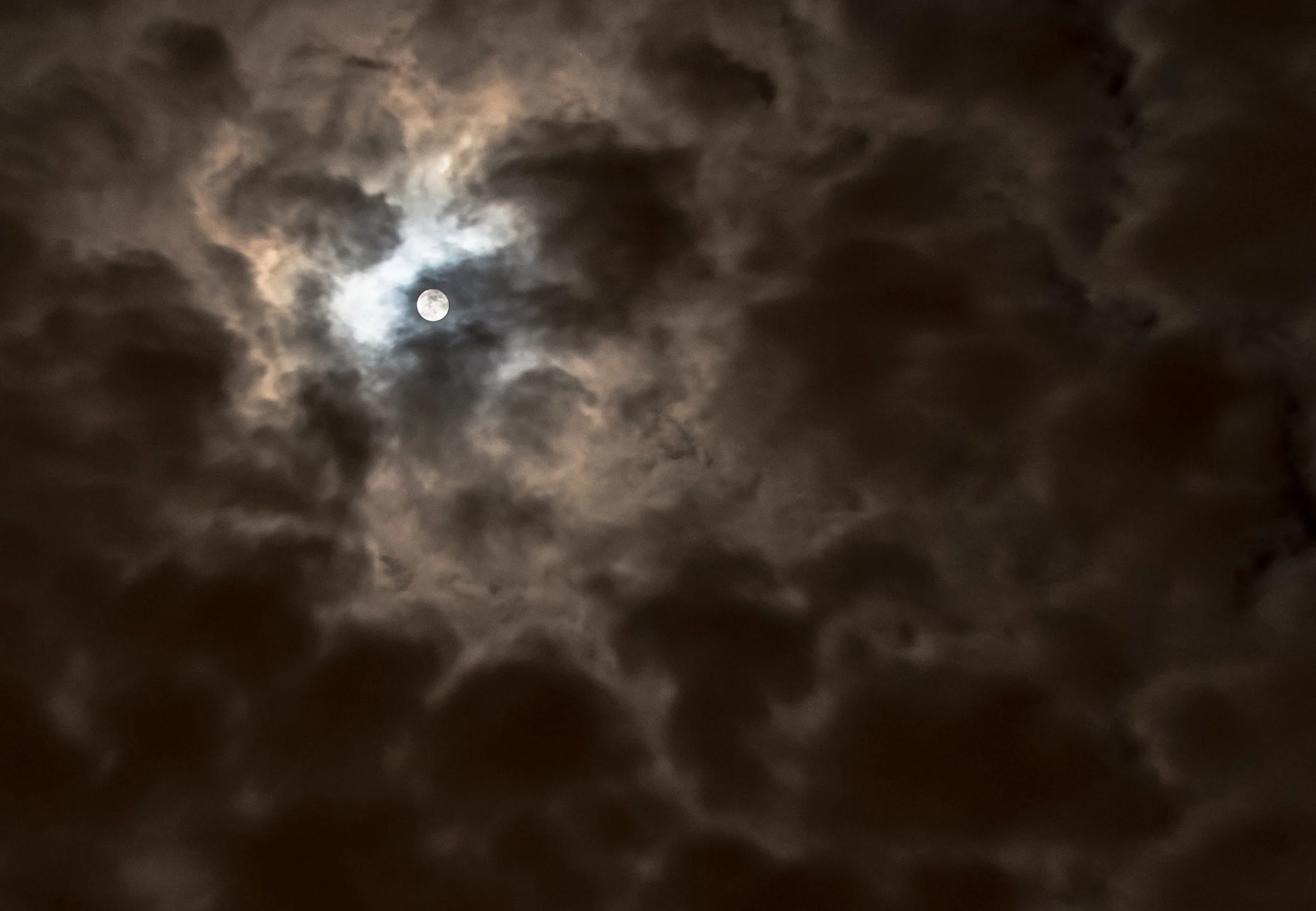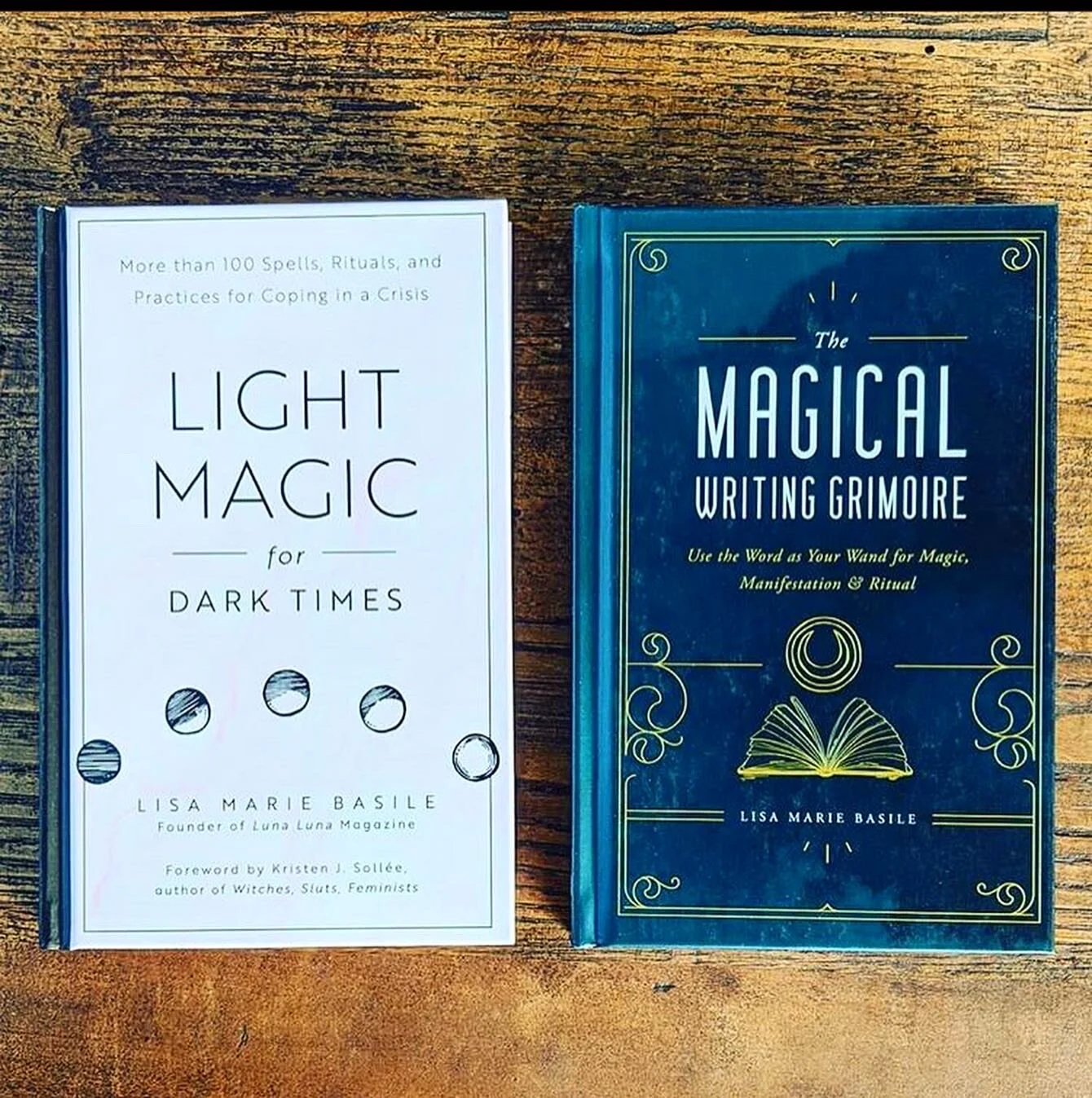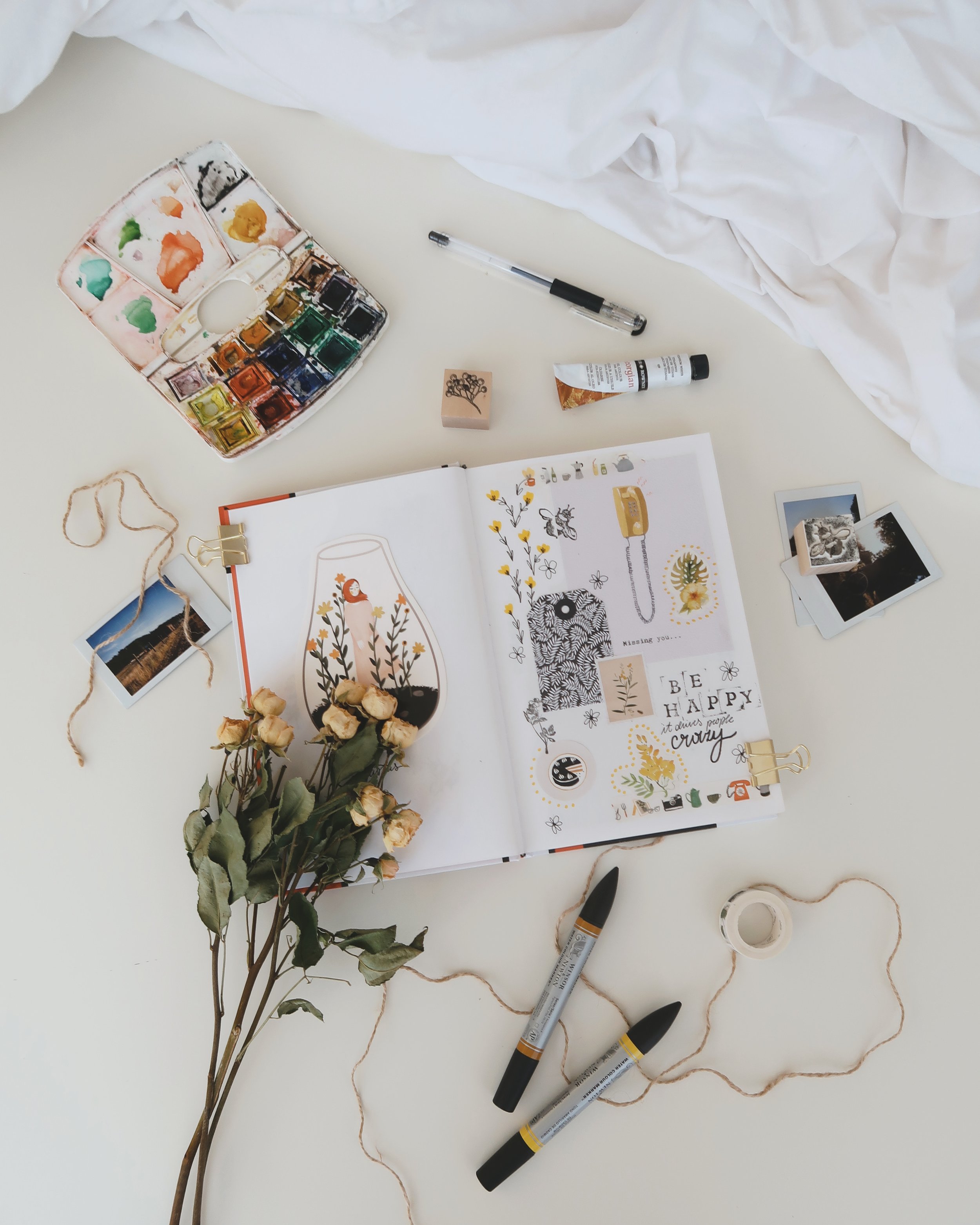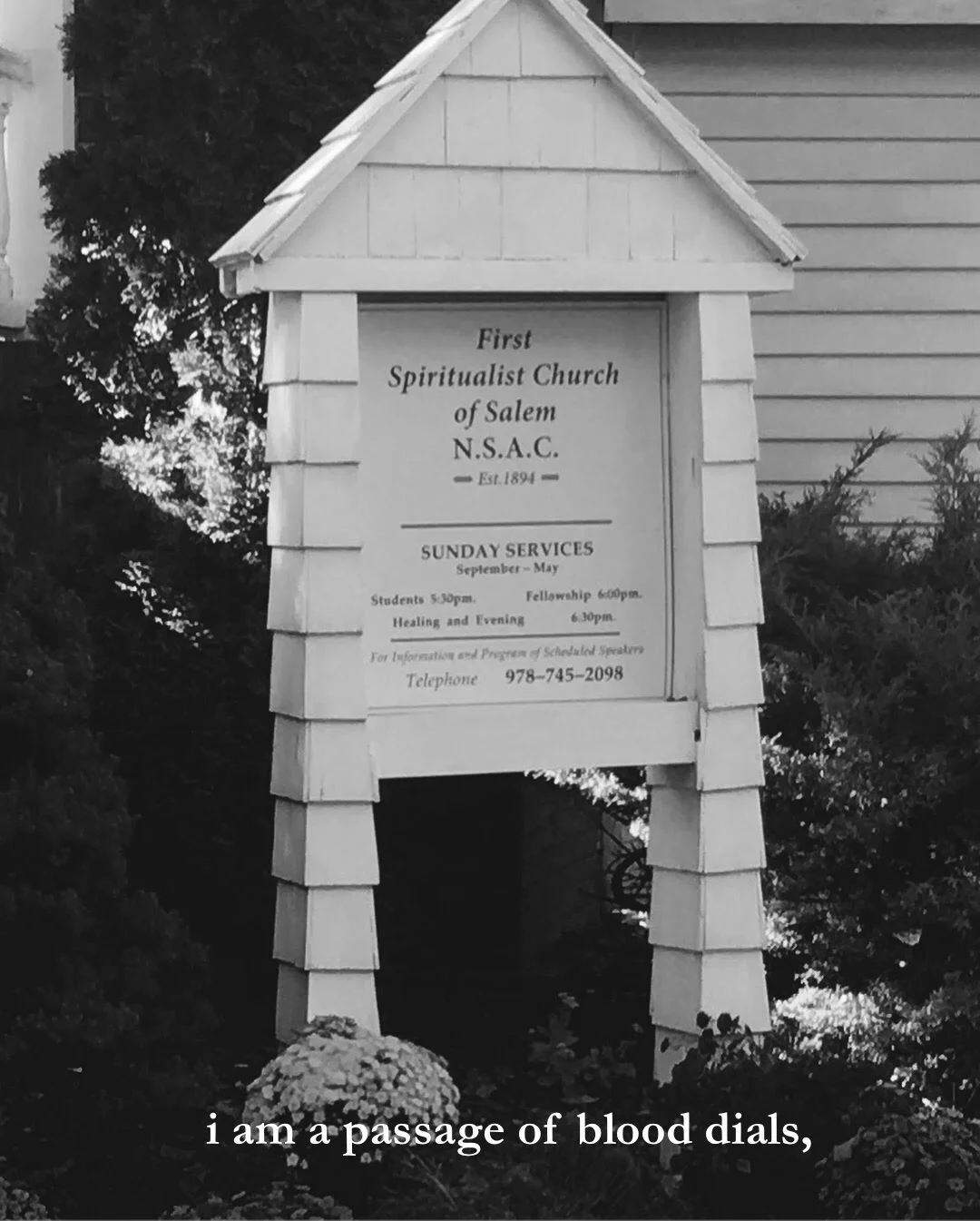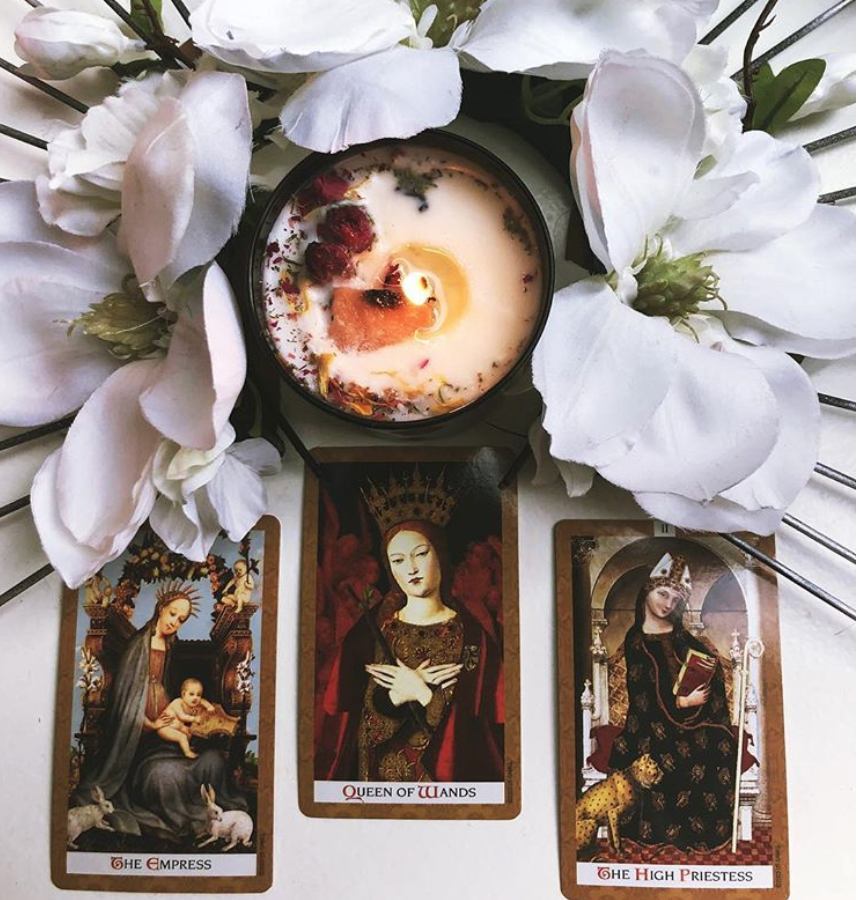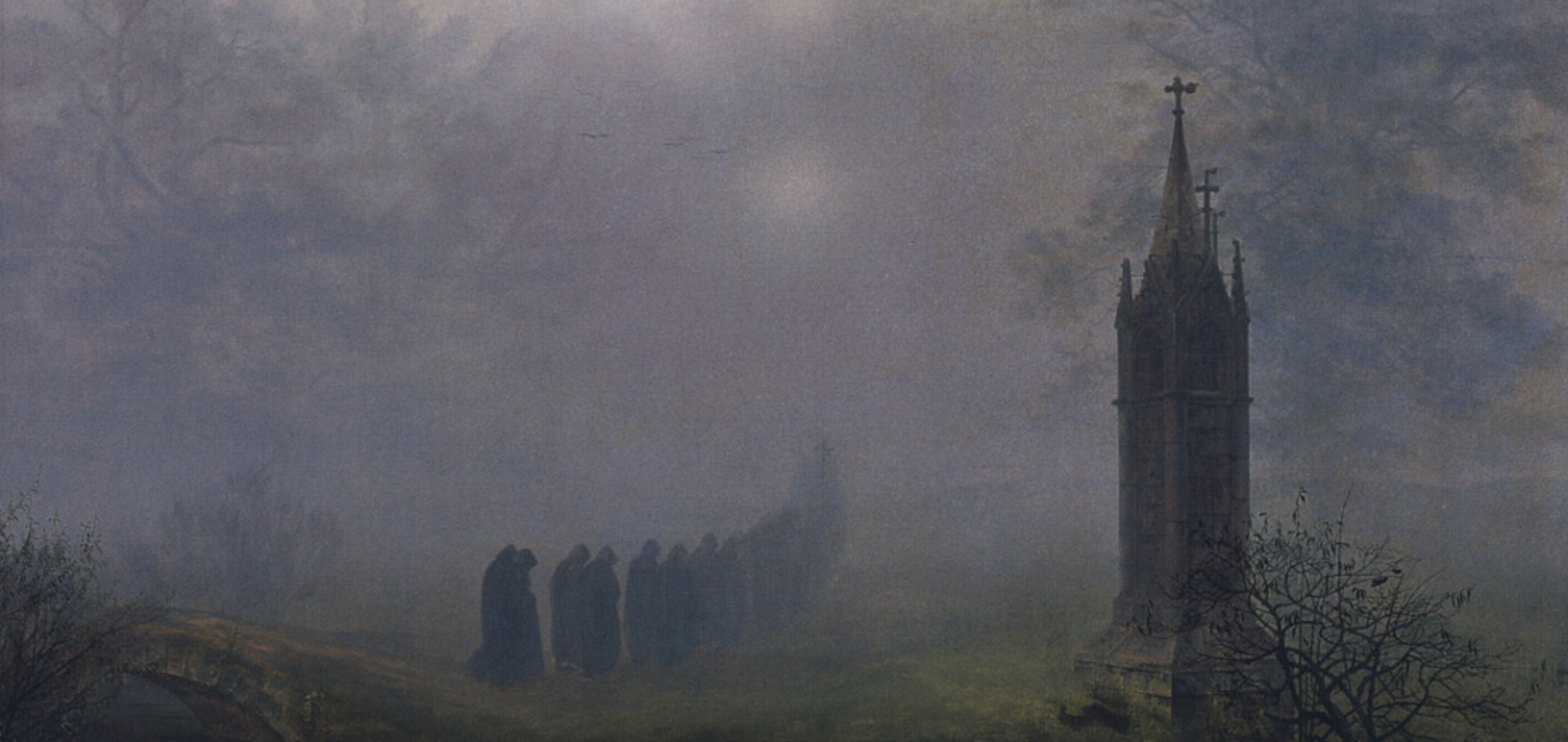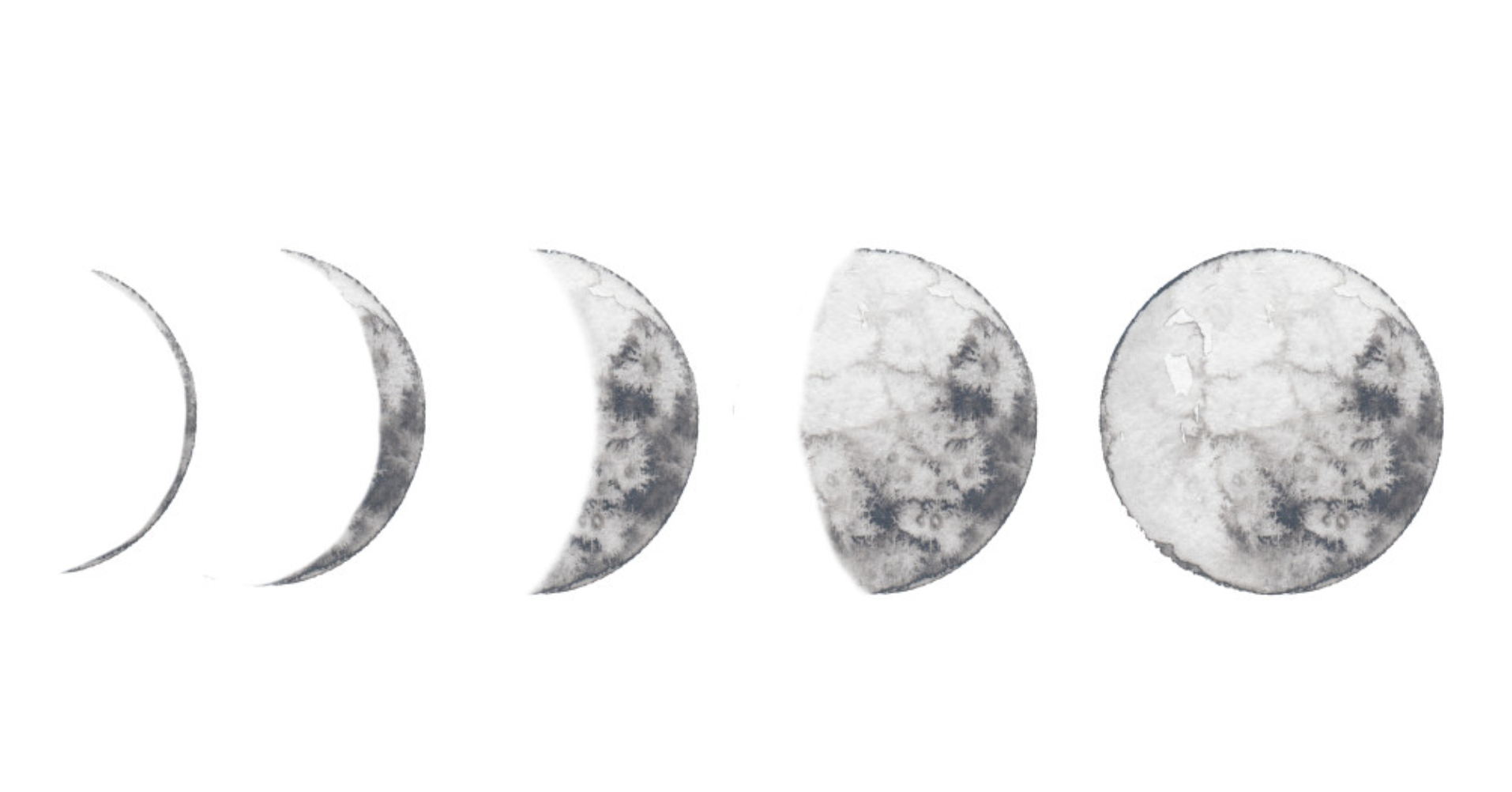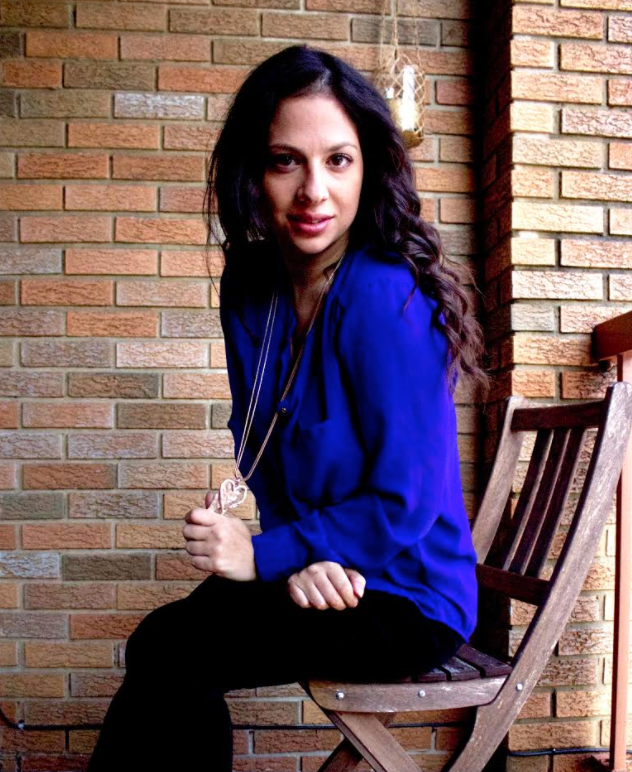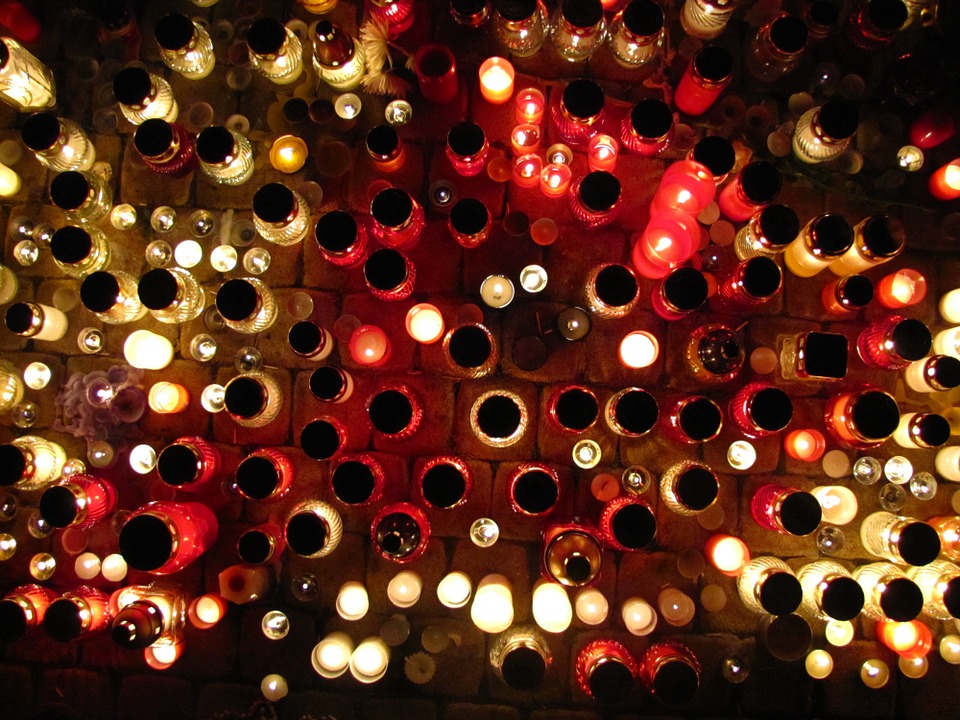It is okay to give into the season and stay indoors where it is warm and snuggle in bed with your animals by candlelight with a mug of delicious tea. That if you are a creative type, you don’t have to be generating anything right now. You can use this time to absorb rather than produce. Let this be a time of inspiration collecting.
Read MoreJohan Peijnenburg
How to Celebrate/Center the Holidays around Death
Seemingly non-pagan holidays dwell in the midst of winter solstice – their roots are witches. During the darkest part of the year, when the veil is thinnest, we gather for ceremony. This is no coincidence – this is by design. While the days grow shorter and moon light lingers longer, what we really celebrate is not the birth of something or someone, but death. Capricorn season oozes with death. It is covering everything in colder temperatures and frosty layers – it is where things go to die. It is Saturnalia.
Read MoreDracula Is Really Just Every Rapist & Abuser You Know
Joanna C. Valente is a human who lives in Brooklyn, New York. They are the author of Sirs & Madams (Aldrich Press, 2014), The Gods Are Dead (Deadly Chaps Press, 2015), Marys of the Sea (Operating System, 2017), Sexting the Dead (Unknown Press, 2018), Xenos (Agape Editions, 2016), and is the editor of A Shadow Map: Writing by Survivors of Sexual Assault (CCM, 2017). They received their MFA in writing at Sarah Lawrence College. Joanna is the founder of Yes, Poetry and the managing editor for Civil Coping Mechanisms and Luna Luna Magazine. Some of their writing has appeared, or is forthcoming, in Brooklyn Magazine, Prelude, BUST, Spork Press, and elsewhere. Joanna also leads workshops at Brooklyn Poets. joannavalente.com / Twitter: @joannasaid / IG: joannacvalente
Read MoreProphetic Growth: Tarot Reading for Introspection
BY SIN RIBBON
Most believe a tarot deck’s use lies in divination, cards cast in a particular spread in order to foretell the future, yet many experienced tarot readers will you it is less about seeing into the future and more about providing insight to the individual asking the question. I rarely use tarot cards on others, but whether I’m giving a reading to someone else or divining the cards for myself, the search is always for guidance.
Most of us are worried about something at any given time. When a problem is solved, we shift our attention to a new one. Some find calm through meditation, yoga, or a relaxing hobby, and while these activities are healthy for the mind and body, tarot may provide specific clarity to the troubles that we face. I use the cards to better understand myself, the hidden subconscious layers that are often masked in superficial anxieties. Whenever I face an obstacle, the cards illuminate aspects I may have overlooked or ignored. It frames a new perspective, and that allows me to see things in a new way. Other times, they provide a friendly reminder that I am simply moving through a difficult period and that the light will shine again. They’ve provided me with a great deal of strength and reassurance over the years.
There are a wide variety of spreads (and decks) one can use; no one way is wrong. Even a typical playing card deck may be used, and there are several variations of the traditional tarot as well, some replacing the major and minor arcana altogether in favor of alternate meanings (oracle decks). I own six decks spanning tarot and oracle, and each has its own personality. One deck I use almost exclusively for the traditional Celtic cross formation (ten cards) that I divine for other people; another for decorative purposes in my home, such as pinning the cards to doorways and surrounding artworks; and the others I use for personal readings in spreads that rarely exceed six cards, the choice of deck depending on the answers I’m seeking.
Even traditional tarot decks will vary in meaning between decks. While each card in the tarot has an assigned meaning, every deck creator has their own interpretation. Some decks include reversed meanings whereas others must always be read right-side up. As you get to know a deck, so to speak, you will form unique interpretations of the respective cards; certain cards may appear frequently or carry special meanings.
RELATED: Read Tarot With a Simple Deck of Playing Cards
Divining the cards is a meditative process that requires an open mind. Cards will share truths you may be resistant to receiving, so it’s important to be objective and willing to see from a new perspective. Quite a few people misunderstand the cards and assume they provide clear yes’s and no’s, but the search for wisdom is an internal one. A solution discovered on your own is more powerful than one simply told to you. Many times the reader is faced with aspects of a situation they were subconsciously aware of but had yet to assemble into a coherent whole. I drew a reading for a friend who received several cards highlighting her submissiveness and inability to stand up for herself, sacrificing her wants and needs in the process. She realized this part of her personality was a bigger issue than she had wanted to admit and thus could work on becoming more assertive. This progression from latent problem to personal growth is how the cards are most effective. Often, the cards provide validation for things we suspect may need focus, change, or healing, but we’re too afraid to face those issues until an outside source says, “Go for it!” The cards can provide specific insight in this way which is why they are a part of my personal journey for enlightenment and spiritual growth.
Validation is something we all crave. Whenever I am sleepless with anxiety, upset about rejected opportunities, or feel like my life is progressing too slowly, I turn to the cards. Sometimes they call me to action. Other times, they reassure me that difficulty is a natural part of the journey. Recently, I drew an oracle card that comforted me by telling me that while this point in my life was painful, it was okay to feel hurt. Suffering can be our greatest teacher, showing us the depth of our humanity and stretching our limitations to become stronger and more understanding. Drawing that card assured me that my pain was valid, and all I needed was time to heal. Sometimes, that’s all you can do.
In a strange way, the cards function as more of a therapist, providing insight, comfort, and encouragement when I need it most. They illuminate personal faults while providing guidance on how one can move forward. While one may attempt to foretell the future with tarot cards, I believe that would leave the reader disappointed, as the point of life is not to avoid problems but to change into someone capable of handling them.
If you’re looking to start using tarot and oracle decks, consider shopping around. Choose a deck whose artwork and meanings resonate with you personally. I believe that card divination is merely a translation of truths we already know but which have fallen lost in the sea of doubt and second-guessing. Think of a spread as a diagram of intuition. Tarot and oracle readings are a way of bringing sleeping issues and solutions to light, a method of becoming more honest with ourselves and listening to that still small voice which is always trying to guide us.
Like this work? Donate to Sin Ribbon.
Sin Ribbon is a storyteller on page, canvas and screen—her work culminated from poetry, screenplays, films and paintings. An eclectic blend, she draws from the philosophical and spiritual to spin existential tales of encouragement and consequence. Her works originate from the caverns of introspection and explore issues of identity, origin, loss and depression, and the quest for meaning. You can find her art on her website at https://sinribbon.com and her narrative podcast, 'In Her Burning: A Surreal Diary,' on iTunes.
Winter Comes, It Always Does
BY PEG ALOI
I wanted a grey day, the beggar said, one with huntsmen lurking in the bracken, willowy girls in wet dresses skipping through the bogs, ginger cats slipping down silken copses to dispatch voles and snakes and buckets brimming with mist-ripened plums.
I remember the cries of blackbirds, the poet mused, in the heat of midday, swirling over burning cornstalks, black spirals tracing otherworlds beneath blue clouds gleaming, disappearing into the ravine, into coming twilight, where brown armies of scurrying ants and black covens of twitching cicadas converge, oblivious, waiting in the whispering dark for dew.
I wanted the smoldering brush, the husband said, the winnowing baskets and wagons stacked with pumpkins and leeks, the last sheaf of grain held high by the harvest queen, lips like wineskins plump and red, copper bracelet flashing like green fire, her eyes the summer stars, her belly the moon.
I know the old ones hacked these fields with scythes, the wife insisted, scraping wheat and barley for winter stores, slaughtering cattle at the Blood Moon and salting it in woolen sacks, blessing the horses with cups of cider, rolling russets into the bins and hoarding twists of sugar between candle boxes. We pray for an early snow to soften the fields.
Another day in the countryside is what I wanted, the child said, one that should end as it begins, with tinkling lamps, our skin scented with sour sweat, hot chocolate, by the fire with cheese and bread, songs sung in my head at sunrise, offered as blessings to midnight travelers, sending us off to sleep with melodies, memories, circling like crows at dusk, like hawks of morning.
We go to Safeways now, but it still tastes like magic if we walk 'round the garden three times before supper.
Like this work? Donate to Peg Aloi.
Peg Aloi: I am a freelance film critic, media studies scholar, and general wordsmith on many topics. My poetry has appeared in Goblin Fruit and Obsidian Magazine. Currently writing for The Arts Fuse, the Orlando Weekly, Cinemazine, Diabolique, The Establishment, and other fine folks, and my blog "The Witching Hour," hosted on Patheos for years, now has its own domain. I am a co-founder of The Witches' Voice, Inc. and its longtime Media Coordinator. I own small baking and gardening businesses, and am studying horticulture. My witchcraft is the hedgewitchy kind, sprinkled with glitter
Glyn Smyth
Sacred Simplicity: A Few More Easy Witchcraft Ideas
The beauty of witchcraft is that it is inherently personal, and yet there is a community full of resources and inspiration upon which to draw. In that spirit, here are a few more ideas to help manifest your magic day-to-day.
Read MoreIllustration by artist Lucy Smyth
10 Krampus Artists & Makers to Support This Holiday Season
#treatyonaughtyself to some Krampus goodies.
Read MoreHighgate Cemetery. London, England.
2 Books To Delight the Tombstone Tourist in You
Why would anyone go out of the way to visit a graveyard intentionally? In addition to the fascinating stories they contain, cemeteries can be open-air sculpture parks, full of one-of-a-kind artwork. They provide habitats for birds and wildlife, as well as arboretums and gardens of surprising beauty. Cemeteries appeal to art lovers, amateur sociologists, birdwatchers, master gardeners, historians, hikers, genealogists, picnickers, and anyone who just wants to stop and smell the roses. Our relationships with the places we visit can be deepened and enriched by learning the stories of those who came—and stayed—before us.
Read MoreAltar by Lisa Marie Basile, polaroid by Gregory Crosby
How to Create an Altar for Self-Care & Intention Setting
BY LISA MARIE BASILE
If you keep an altar in your home, it may be a place where you naturally gravitate after work to ground yourself and get all that commute-work-capitalism off of you. It might be a place where you do spellwork. Or it might not be an altar for spellcraft at all; it may simply exist as a place where you keep symbols—reminders—of your strength, vision, and creativity, especially if feeling strong or wise or creative or happy isn't always easy (and when is it?).
For me, it's a little bit of each column—a place for me to be surrounded by my personal power objects in order to meditate and cast my intentions, and also a place where I can build a sort of mood board of my self at any given moment. I like to gather pictures of myself, crystals (these are from Myths of Creation) that I use as symbols for love and healing (for example), objects that represent my power—shells, seawater, perfumes—and other elemental bits (stones, flowers) from places that have symbolic power to me (like I always include a stone I got from a fisherman's village in Italy, a trip that was life-defining for me).
At my altar, I always write notes to myself in the present, mostly for things I need or desire or hope for currently. I admit I turn to the altar in moments of desperation (like, say, when I feel particularly troubled, anxious or sick), but I frequently try to do this with each new moon as a way to sort of get all those jumbled thoughts out of my head, down onto paper (a huge part of my craft), and into the universe where they can manifest. This new moon, I asked for strength and clarity in dealing with my chronic illness.
It's also really liberating and fun to create something beautiful made up entirely of your own vision—a creative and cathartic practice that, in itself, is meditative and reflective of your unique selfhood.
RELATED: How to Authentically & Honestly Create a Personal Altar
Would you like to build an altar? Here's what you'll need:
- Objects that represent you (a book, a piece of your jewelry a piece of fabric sprayed with your perfume)
- A candle to burn as you focus on your intention
- Oils (I use Moon Goddess Magick Apothecary oils). I tend to dab a bit on my wrists and on my power objects)
- Elemental objects to strengthen your intentions (a bowl of water, dirt, sand, shells)
- A note, handwritten, with your intention or goal
- A mirror for self-gazing and reflection
- A photograph of you, if you have one or would like to use one
LISA MARIE BASILE is a poet, essayist and editor living in NYC. She studied English and psychology as an undergraduate at Pace University and received a Masters in writing from NYC’s The New School. She's the founding editor-in- chief of Luna Luna Magazine (an online magazine & community dedicated to literature, witchcraft, the arts, and women). She is the author of a few books of poetry: Apocryphal, war/lock, Triste, and Andalucia. Her book NYMPHOLEPSY (co-authored with Alyssa Morhardt-Goldstein) will be published by Inside the Castle in November 2018 and was a finalist in the 2017 Tarpaulin Sky Book Awards. She is working on her first novella, to be released by Clash Books in 2019. Her poetry can be heard narrating the Into The Veil event video by Atlas Obscura. Her work has been nominated for the Best American Experimental Writing anthology and for several Pushcart Prizes. Her work has appeared in the Cambridge Writers Workshop anthology and in Best Small Fictions 2015, selected by Pulitzer Prize-winning writer Robert Olen Butler. Lisa Marie has been published in or syndicated by Refinery 29, Greatist, Bust, Bustle, Marie Claire, The Establishment, Hello Giggles, The Gloss, Ravishly, The Huffington Post, Cosmopolitan, and more. Work is forthcoming in the New York Times, Narrartively and more. FOLLOW HER ON TWITTER & INSTAGRAM.
How to Moonbathe At Your Window
BY DINAH ALOBEID
Life is lived today on social platforms and via quick photographs. So why not slow down and get in touch with something greater? Moonbathing is a beautiful and unique way to commune with nature and the universe.
I was exposed to the ritual elements of moonbathing thanks to the book "Moon Spells: How to Use the Phases of the Moon to Get What You Want" earlier this year. The fact remains that throughout my many, many moons on earth prior to being exposed to any formal idea of moonbathing, I’d often found myself staring up at that hanging orb of wonderment. I’ve noticed that my breathing becomes more even when I glance up at the moon from the car, or during a subway ride. The moon is constantly changing, yet has a consistent quality. Anywhere we might be in the world, we can all look up at the same moon, albeit from a different angle. The moon’s changing phases are as consistent as they are rife with potential healing and soothing powers.
But what of moonbathing, you might ask. How does one go about preparing for a moon bath? What are the benefits?
Moonbathing is as it sounds—simple yet powerful beyond compare. I believe it is a widely unknown, untapped, free and rejuvenating activity done during any phase of the moon. Unlike with sunbathing, moonbathing has absolutely no negative effect on your skin or physicality and can be done anywhere where the moon is visible. In other words, absolutely anywhere in the world. It doesn’t even need to take place outdoors! All you need is a window to allow the moonlight to flood your space.
RELATED: Photo Essay: Harvesting Moonlight from Our Bodies
Moonbathing is...
Cooling: Moonlight is the sun’s light reflected of earth’s lunar goddess. Its hue can be red-tinged, warm with sunset-streaked colors, or mysterious and vibey with violet undertones. No matter the time of year or the phase of the moon, the moon and the surrounding night darkness provides a cooling environment to offset hot summer days or stress-filled daytime interactions.
Energizing: The sun’s rays provide humans with energy and are a natural mood-lifter. I know the positive scientific effects and implications of sunlight. It provides us with much-needed vitamin D to keep our spirits and moods up, and is a key component to nurturing our plants and planet in such a direct, and beautiful way. But the cool night environment that comes with moonbathing offers a different kind of energy. A collective sigh for the soul, if you will, that allows us to slow down, relax, and contemplate in a steady way that is not based on fire-driven energy. I know for myself personally, with prominent pitta dosha makeup to my ayurvedic composition, cooling is a necessity for my fiery temperament and metabolic disposition.
Replenishing: Decreasing stress is a lifelong struggle for me, personally—and likely for you. Stress is an ingenious and wily entity, finding us no matter how hard we may try to hide. You can reflect, meditate, and do some internal nourishing through moonlight. It’s inherently relaxing—you don’t have to be anywhere at a certain time. You don’t have to pay a fee. You can be as disrobed as you want (in warmer months) or bask in the glow from the privacy and security of your home. Just set yourself up near a window where the moon is visible.
Transformative: Eclipses bring about major change in our lives whether we want to respect the solar impact or not. Not to mention the moon’s storied history across the world and the beliefs across many cultures, religions, which is seen to contribute directly to fluctuations in our personal lives, societal upheavals and of course the phases of plant growth.
The sacred feminine: Always aligned with the feminine, some of my friends and I tend to feel connected to the moon in ebbs and flow (pun intended). The power of the moon lies in the heart of the believer; it can be as strong or weak as importance you give to it. For me, a moonchild born under the sign of Cancer (whose ruling planet is the Moon) I feel an inexplicabe vibrational connectivity to all things lunar. For some, there is a draw to the moon that is on a psychic wavelength, a feeling that perhaps la lune is speaking directly to us. I often feel this way, trying to decipher what she’s trying to convey. Moonbathing is a direct path to communicating with the moon in whatever way you feel most comfortable.
Natural: The lunar cycle is directly linked to earth’s ocean tides, and throughout the entire history of humanity and across ancient and modern cultures, the moon has played a vitally important role in harvest, new beginnings, and decisionmaking. The phases of the moon provide a time-marking cycle of 28 days, and the different moons are aligned with seasons in an intriguing way. With full moon names driven from ancient cultures, such as the Harvest Moon and the Wolf Moon, it’s easy to see how the moon plays a major role in our lives. The moon gives us so much, without asking for anything in return. Moonbathing is the natural activity for individuals who want to absorb the moon’s energies and commune with nature in a way that does no harm, and does yourself a whole world of good.
Now I urge you—head outside and bathe in the moon’s light!
Dinah Alobeid is a writer and New York City native. By day, she's the director of communications for a tech company, but during the witching hours she's a writer dabbling in non-fiction, poetry, personal essay, fiction, and more. She blogs, she reads, she dances.
Dinah's work has been published in CureJoy, Blast Magazine, Rivertowns Enterprise News and more. Her poetry has appeared in Spectrum Literary Arts Magazine.
You can find and connect with her on Twitter @dinahsusan and on her blog Unchained Creative. She's also doling out unsolicited micro book reviews on her Instagram page @theyearofthebook.
Pixabay
Awakening The Dead: A Spell For Dia De Los Muertos
Halloween’s traditions come from the Pagan ritual of Samhain. Ghosts and demons are said to be able to break through and meet us on our plane of existence. In ancient times, costumes were worn and sweets were put out to shield us from the dead returned to life. It was believed that if the dead couldn’t recognize you, they couldn’t hurt you. Though the wigs, masks, and makeup we use to transform ourselves are fun, they are not just for decoration.
Read Morephotograph by Gary Kenney
Let This Scorpio Walk You Through Scorpio Season
BY LISA MARIE BASILE
I don’t care whether you believe it or not, the Scorpio exists. If it’s not a personality carved out by the celestial, then it is most certainly an archetype born out of real-life human beings, the kind—like me—that drinks, breathes and moves about attached to some chthonic place. We are the people who were born rummaging through the dark. We were the kids who weren’t like the others. We were the adults who realized our strangeness is actually power. Grew into our wings.
Scorpios, I’m talking to you here—but if you love someone who is a Scorp, it’ll benefit you too: It is like we cipher what we need from the darkness just in order to make it through the day. It could be that we drain a crowd of its mass energy—taking just a little bit from you there, and you there, and you over there so that no one aches for what went missing, or it could be that we consistently keep one foot in the otherworld, always dreaming, always obsessing, always plotting. It could be that we expertly speak the language of endings. Because we know endings mean something comes next.
Ruled by Pluto, lorded over by death and sex, we are intrinsically linked to the body—the body as sigil, the body as engine, the body as an immutable thing, and, of course, the body as a thing with an end-date. We can’t seem to ever really live here, on earth, in our town, in our houses, in our workplaces—because a part of us always off somewhere bent over in a corner, meddling, whispering, hiding, licking our wounds, or opening them.
Sure, for the secular among us, it could be that the zodiac is nothing more than a tool for suggestion. Like some view Tarot, for example, astrology provides a map for meditation—rather than being a stone-cold, steadfast, set-in-stone reality. (I mean, hello, "13 signs"—no Scorpio is going to fucking budge, no way). When you’re a scorp, you know it. It’s not like the Aquarius who says "Yes, I am eclectic!" or the Leo who chants, "Look upon me!" Or even the dreamy Pisces, who, like the three water signs (Scorp included) is also always attached to otherworlds. A Scorp is a Scorpio is a Scorpia. Even if you don’t want to be a Scorpio anymore, you’re stuck with us. Trying to hide it is akin to being drunk. You might be able to get around, but you’ll never feel quite right.
Scorp might even influence you if it’s in your chart or, say, your moon sign. Either way you know it. You can feel its pincer spread inside you. You can feel its poison push through you whether you want it or not. When Scorp has you, she has you. I can’t tell you differently.
So brings us to Halloween season—scorpio season. This time of year has always been magical for me (surprise, surprise). I was born November 3—right after all the beautiful festivities honoring the dead (were I to be a Halloween child, well, I curse the universe for failing me…). I’ve always felt most alive now, and with all the talk of Scorpio season, I feel at home, like I’m understood, like I’m seen—not just banished to the shadows of scorn and sex and wound and water and darkness.
But the scorpio is more than Scorpio season. And we’re more than the qualities we’re usually defined by. As sexy and intimidating and intoxicating as we seem, I believe that Scorp is, in equal measure, made from darkness and light. Capable of immense transformation and instrospection, this sign—and its wild season—is a time when we can confront the shadow and find good it in. Find a home in it. Become comfortable with our discomforts. Especially around loss, grief, fear, body, desires, and identity. Do not worry that this season will bring out your ghosts and leave you scared and haunted and overwhelmed—because you can harness all of that and use it to your benefit. (And just think: For some of us, it’s always Scorpio Season. If you don’t live in this place in perpetuity, consider yourself, well, lucky?).
But for just this season, transient and ending, you can indulge.
Some of the indulgence tips I include below are therapeutic in a very DIY way. I encourage you to seek professional help if you feel you need it, though. Working through your pain or grief on your own is one thing, but if you feel you need help, do ask for it. The Scorpio would want you to be good to yourself, even if she doesn’t always express it.
Here are some ways Scorpio Season can be curative—if you work it, rather than fear it.
1.Keep a shadow journal.
Here is where you’ll write down all those secrets, all those fears, all that loss, all those people you miss, all that pain. You want it out, and down. You want to sit with it, read it, accept it, and know that these secrets are safe (the scorpio is very secretive, which can make her sick). But mostly, being able to feel a little more comfortable with your wounds can actually lessen their sting.
2. Power your transformation.
If you want to be the person who stops showing up late, or the person who finally lets himself feel loved, or the person who wants to speak up when you think you ought to, scorpio season is the time to make those efforts. With scorpio’s intense transformative powers, this is the time to apply all that energy. You might here of scorpio’s death wish, but really it’s the fact that scorpio feels the need to transmorph, to kill a part of themselves off (give birth to another) and send it to the grave.
3. Talk to the dead.
Scorpio is the sign of the dead, sure. We all know that. And while that might mean Scorpios are busy walking that liminal space, it doesn’t mean you can’t join them. Whether the veils are literally or metaphorically open—because many people and Scorps are secular and don’t really believe this season is really a time of spirits—it’s still a good time to meet grief head-on. (Again, see note above around seeking professional help if you can’t move through grief on your own).
I like to write letters to my dead, sometimes I like to bury those letters, and sometimes I like to visit those graves or places where the dead are and just talk. I took part in something called Into the Veil a few weeks ago, where I recited poetry in a graveyard. The event was produced by Atlas Obscura, and was a truly death positive evening in that it allowed visitors to discover art and transformative ritual around death. The more we sit with it, the more we acknoelege it, the less power it holds over us—at least that’s the theory. It may be hard to stomach (for me, it was), but being surrounded by all those tombstones meant something: Life regenerates, life moves, life ends, memory lives, memories mean something, and that we ought to to live while we have the chance—live for our loved ones who cannot. Who didn’t get a long enough chance. This scorpio season, sit with the dead, or your dead, and just try to find a way to make peace. It’s probably different for all of us, that way, but it can yield beautiful results.
Lisa Marie Basile is the founding editor-in-chief and creative director of Luna Luna Magazine. She is also the moderator of its digital community.
Her work has appeared in The Establishment, Bustle, entropy, Bust, Hello Giggles, Marie Claire, Good Housekeeping, greatist, Cosmopolitan and The Huffington Post, among other sites. She is the author of Apocryphal (Noctuary Press), war/lock (Hyacinth Girl Press), Andalucia (The Poetry Society of New York) and Triste (Dancing Girl Press). her book, nympholepsy, was a finalist in the 2017 tarpaulin sky book awards.
Her work can be found in PANK, the Tin House blog, The Nervous Breakdown, The Huffington Post, Best American Poetry, PEN American Center, The Atlas Review, and tarpaulin sky, among others. She has taught or spoken at Brooklyn Brainery, Columbia University, New York University and Emerson College. Lisa Marie Basile holds an MFA from The New School. @lisamariebasile
The VVitch (2015)
Ten Movies About Witches That Will Terrify and Enchant You
Some movies get it right, though. These movies about witches have one thing in common: female characters who struggle with their inner demons; as they awaken to their powers, there are consequences. Thou shalt not suffer another excellent witch movie to be unseen, so break out the Absinthe and have some witchy fun!
Read MorePhotography of Lotta Van Droom via Beautiful/Decay
Book of Shadows: Dream Reality by Tina V. Cabrera
Dreams are like music—you cannot explain what moves you or draws you to the melody. Dreams, like music, leave only an impression. Dreams are not the stuff of science or the intellect. Not any better or worse than waking reality, just different.
Read MorePixabay
Growing Up In A Haunted House
It is three a.m. My room is dark. I don’t move, barely breathe. What caused me to wake? When I glance at the red numbers glaring at me from the clock, I see her. A woman is standing in the corner of my room. I try to keep myself together. I don’t want it known that I’ve seen her. But I am too late. She knows.
Read More



